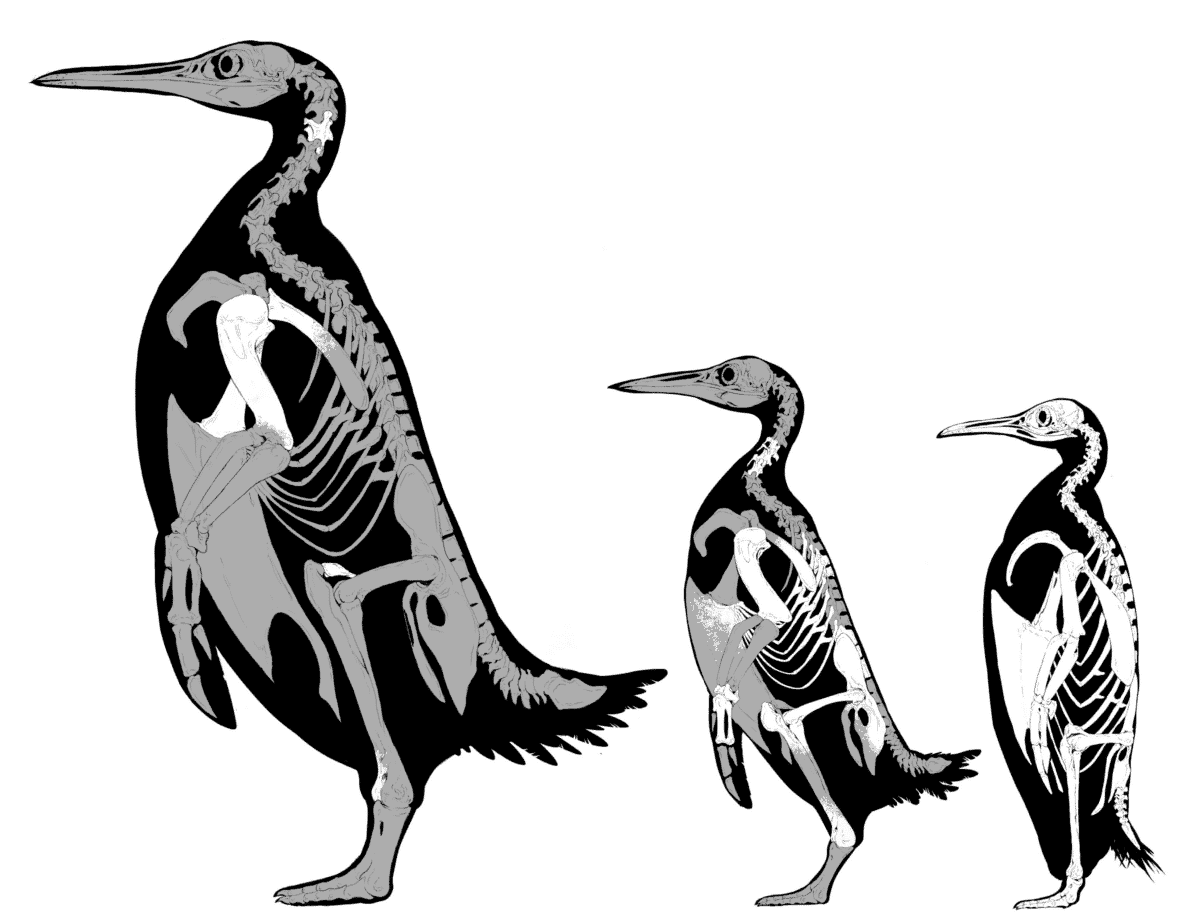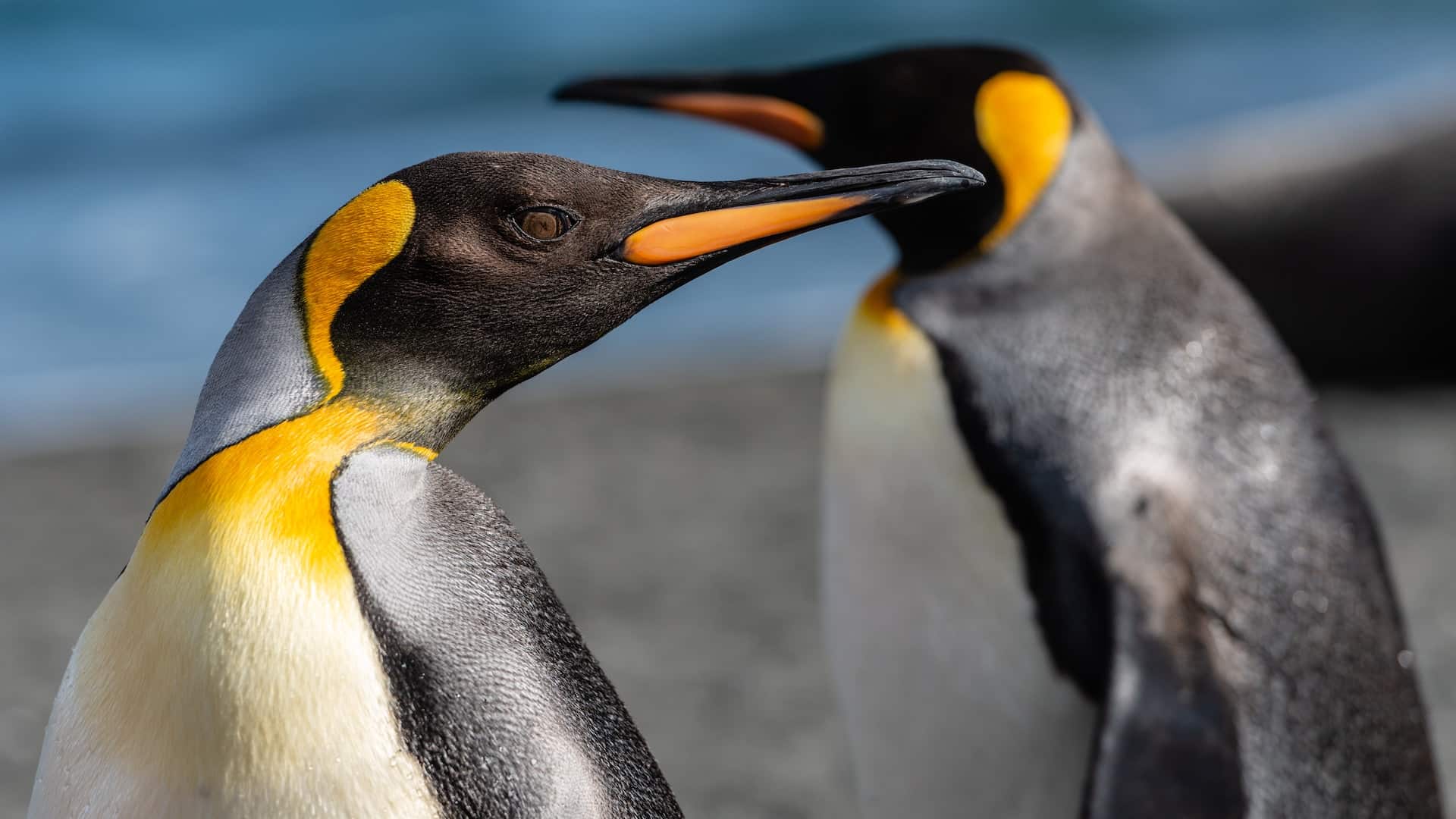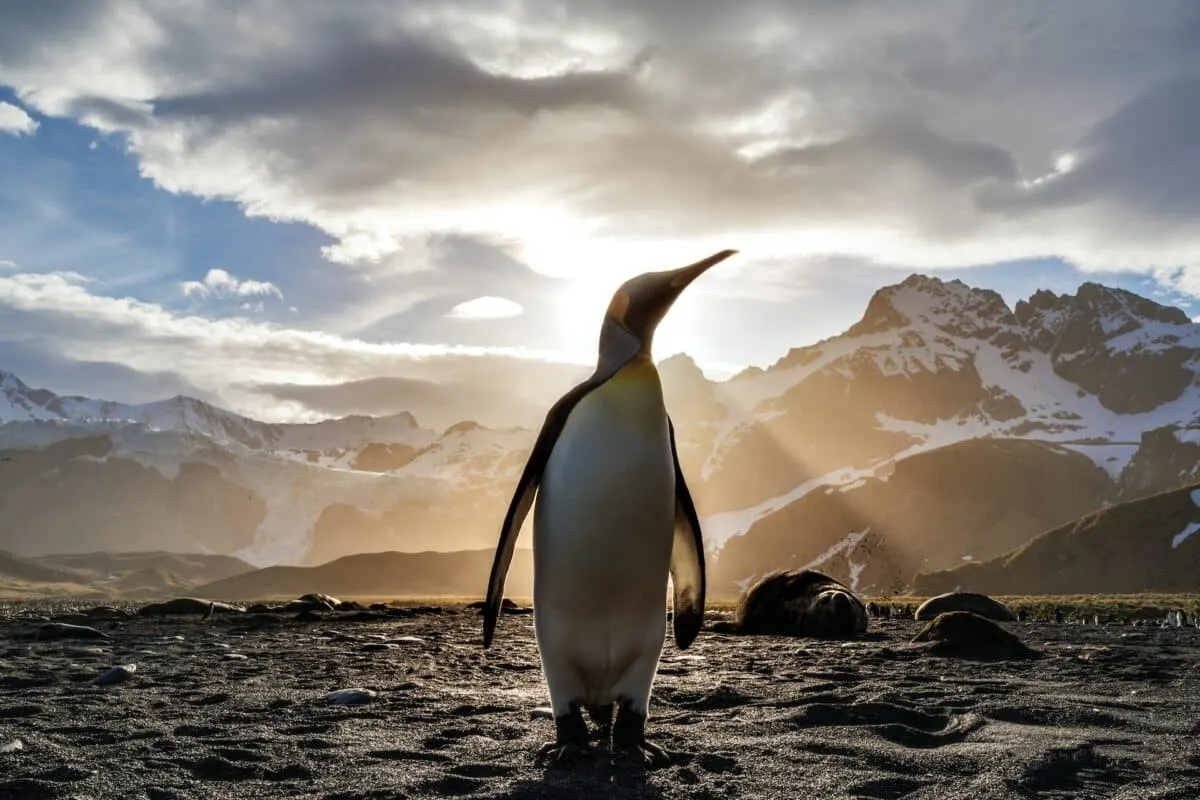In the sandy shores of New Zealand’s South Island, a remarkable discovery has rewritten the history of penguins. Fossil bones from two newly-described species, one of them towering over all its modern counterparts, have emerged from the depths of time, revealing a colossal creature weighing more than 150 kilograms. Join us on a journey through the intriguing world of the largest penguin ever recorded, where ancient giants once roamed, leaving behind clues to their colossal existence.

Ancient Giants: Kumimanu fordycei
Imagine a penguin standing taller than an NBA superstar at the peak of his dominance. Meet Kumimanu fordycei, the largest fossil penguin ever discovered. Weighing in at a staggering 154 kg, this ancient giant would have dwarfed the largest living penguins we know today. Unearthed by an international team, led by the Museum of New Zealand Te Papa Tongarewa, these fossils date back 57 million years, mere moments in the vast timeline of Earth’s history.
The Legends Behind the Names
The team bestowed the name Kumimanu fordycei in honor of the legendary Dr. R. Ewan Fordyce, a generous mentor and an icon in the field of paleontology. This giant penguin is a testament to the rich history of Earth’s inhabitants and the profound impact of mentors like Dr. Fordyce. Additionally, the discovery of a second penguin species, Petradyptes stonehousei, weighing 50 kg, pays homage to the late Dr. Bernard Stonehouse, a pioneer in penguin biology who observed the full breeding cycle of the emperor penguin.
Eons of Evolution: Penguins on a Gigantic Scale
These colossal penguins existed millions of years before their smaller, modern counterparts. Kumimanu fordycei and Petradyptes stonehousei possessed primitive features, showcasing slender flipper bones and muscle attachment points reminiscent of flying birds. The mystery of why these early penguins grew to such titanic proportions lies in the advantages it brought them. A larger size meant the ability to capture more substantial prey and better conservation of body temperature in frigid waters.

Diving into the Unknown: The Ecological Secrets of Giants
One might wonder about the ecological advantages that came with being a colossal penguin. According to Dr. Daniel Ksepka, a researcher from the Bruce Museum, size would have allowed these ancient giants to dive to greater depths, accessing food that eludes their smaller modern relatives. The ocean depths hid secrets that only these massive penguins could unveil, presenting a unique ecological niche that challenges our understanding of penguin evolution.
The Astonishing Sight: Kumimanu fordycei in its Prime
Picture the beaches of New Zealand 57 million years ago, where the colossal Kumimanu fordycei would have been an astonishing sight. The incomplete nature of its fossil remains adds an air of mystery, leaving researchers eager for future discoveries to shed more light on the biology of this incredible early penguin. As we continue to unravel the secrets of Earth’s past, these ancient giants stand as a testament to the ever-evolving tapestry of life on our planet.
In conclusion, the discovery of the largest penguin ever recorded unveils a chapter in the history of Earth’s inhabitants. It challenges our perceptions of these charming, flightless birds. Kumimanu fordycei and its colossal kin pave the way for future explorations into the ecological marvels of prehistoric penguins. Thus, inviting us to marvel at the mysteries that lie beneath the sands of time.
Thank you for following along with this article –
Next up in the animal kingdom:
- Bald Eagle Family Expand Their Nest In California - April 24, 2024
- Firefighter Saves Abandoned Kittens Found Cuddling In Hoses - April 24, 2024
- Dolphins Get High Playing Catch With A Pufferfish - April 24, 2024

